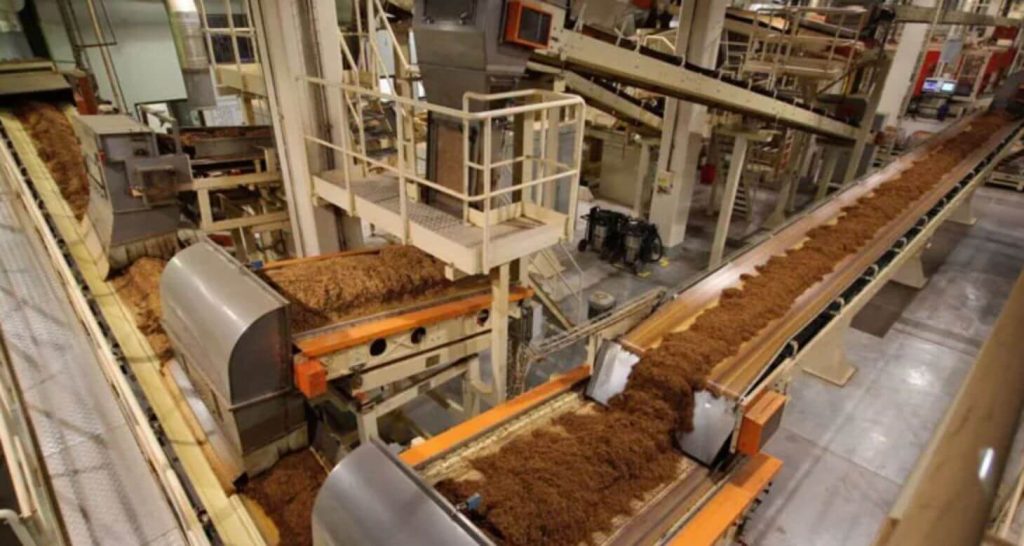
Cut Rolled Expanded Stems (CRES) may not be a term familiar to many, but in the world of tobacco, it plays a significant role. But what exactly are Cut Rolled Expanded Stems? And why are they so important in the production of tobacco?
The Role of Cut Rolled Expanded Stems in Tobacco Production
CRES are a component of tobacco production derived from the stems of the tobacco leaf. These stems are cut, rolled, and then expanded through a specialized process. This process increases the volume of the stems, making them lighter and more suitable for use in tobacco blends. The expanded stems burn at a slower rate and contribute to the overall strength and body of the tobacco blend.
In the realm of tobacco production, Cut Rolled Expanded Stems are a crucial component. They are derived from the stems of the tobacco leaf, which are cut, rolled, and expanded to create a product that is used in various tobacco blends.
The Unique Characteristics of Cut Rolled Expanded Stems
Cut Rolled Expanded Stems possess unique characteristics that make them valuable in tobacco production. They have a distinct flavor profile, burn rate, and contribute to the overall strength and body of the tobacco blend.
The Process of Creating Cut Rolled Expanded Stems
The creation of Cut Rolled Expanded Stems is a multi-step process that involves the selection of tobacco leaves, the cutting and rolling of the stems, and the expansion of the stems.
The Cutting and Rolling Process
The stems are carefully cut and rolled. This process requires precision and skill, as the size and shape of the cut and rolled stems can impact the final product.
The Expansion of Stems
The final step in the process is the expansion of the stems. This involves a specialized process that increases the volume of the stems, making them lighter and more suitable for use in tobacco blends.
The Impact of Cut Rolled Expanded Stems on the Smoking Experience
The inclusion of Cut Rolled Expanded Stems in a tobacco blend can significantly impact the smoking experience. They influence the flavor profile, the burn rate, and the overall strength and body of the blend.
Flavor Profile and Complexity
Cut Rolled Expanded Stems contribute to the flavor profile and complexity of the tobacco blend. They add a unique flavor that complements the other components of the blend, enhancing the overall smoking experience.
Burn Rate and Smoke Production
The inclusion of Cut Rolled Expanded Stems also affects the burn rate and smoke production of the tobacco blend. Due to their expanded nature, they burn at a slower rate and produce aconsistent amount of smoke, enhancing the enjoyment of the smoker.
The Challenges and Solutions in Producing Cut Rolled Expanded Stems
The production of Cut Rolled Expanded Stems is not without its challenges. Maintaining consistency and adapting to variations in tobacco crops are two major hurdles that producers must overcome.
Maintaining Consistency
One of the biggest challenges in producing Cut Rolled Expanded Stems is maintaining consistency. Given the natural variations in tobacco leaves, achieving a consistent product requires skill, experience, and a keen eye for detail.
Adapting to Variations in Tobacco Crops
Tobacco crops can vary from year to year due to differences in weather and growing conditions. Producers of Cut Rolled Expanded Stems must adapt to these variations and adjust their processes accordingly to maintain the quality and consistency of the final product.
Conclusion: The Artistry and Science Behind Cut Rolled Expanded Stems
The production of Cut Rolled Expanded Stems is a delicate balance of art and science. It requires a deep understanding of tobacco, a refined skill set, and a meticulous attention to detail. The result is a unique product that enhances the smoking experience, adding complexity, flavor, and a satisfying burn rate. So, the next time you enjoy a tobacco product, take a moment to appreciate the intricate process and craftsmanship that goes into creating Cut Rolled Expanded Stems.
FAQs:
-
What are Cut Rolled Expanded Stems?
Cut Rolled Expanded Stems are derived from the stems of the tobacco leaf, which are cut, rolled, and expanded to create a product that is used in various tobacco blends. -
Why are Cut Rolled Expanded Stems used in tobacco production?
They are used because they contribute to the flavor profile, burn rate, and overall strength and body of the tobacco blend. -
How are Cut Rolled Expanded Stems created?
The stems of the tobacco leaf are cut, rolled, and then expanded through a specialized process. -
Where are Cut Rolled Expanded Stems used?
They are used in various tobacco blends, including cigarettes, cigars, and pipe tobacco. -
Who uses Cut Rolled Expanded Stems?
Tobacco manufacturers use Cut Rolled Expanded Stems in the production of various tobacco products. -
Can Cut Rolled Expanded Stems be used in all types of tobacco products?
Yes, they can be used in a variety of tobacco products, depending on the desired flavor profile and smoking experience. -
Does the use of Cut Rolled Expanded Stems affect the smoking experience?
Yes, they can significantly impact the smoking experience by influencing the flavor profile, burn rate, and overall strength and body of the blend. -
Will the use of Cut Rolled Expanded Stems change the flavor of the tobacco blend?
Yes, Cut Rolled Expanded Stems contribute to the flavor profile of the tobacco blend. -
Is the production of Cut Rolled Expanded Stems a complex process?
Yes, the production of Cut Rolled Expanded Stems requires precision and skill, as the size and shape of the cut and rolled stems can impact the final product. -
What is the role of Cut Rolled Expanded Stems in the tobacco blend?
They add a unique flavor that complements the other components of the blend, enhance the overall smoking experience, and contribute to the burn rate and overall strength and body of the blend.
Books:
- “Tobacco: Production, Chemistry, and Technology” by Davis et al.
- “Tobacco: A Cultural History of How an Exotic Plant Seduced Civilization” by Iain Gately
